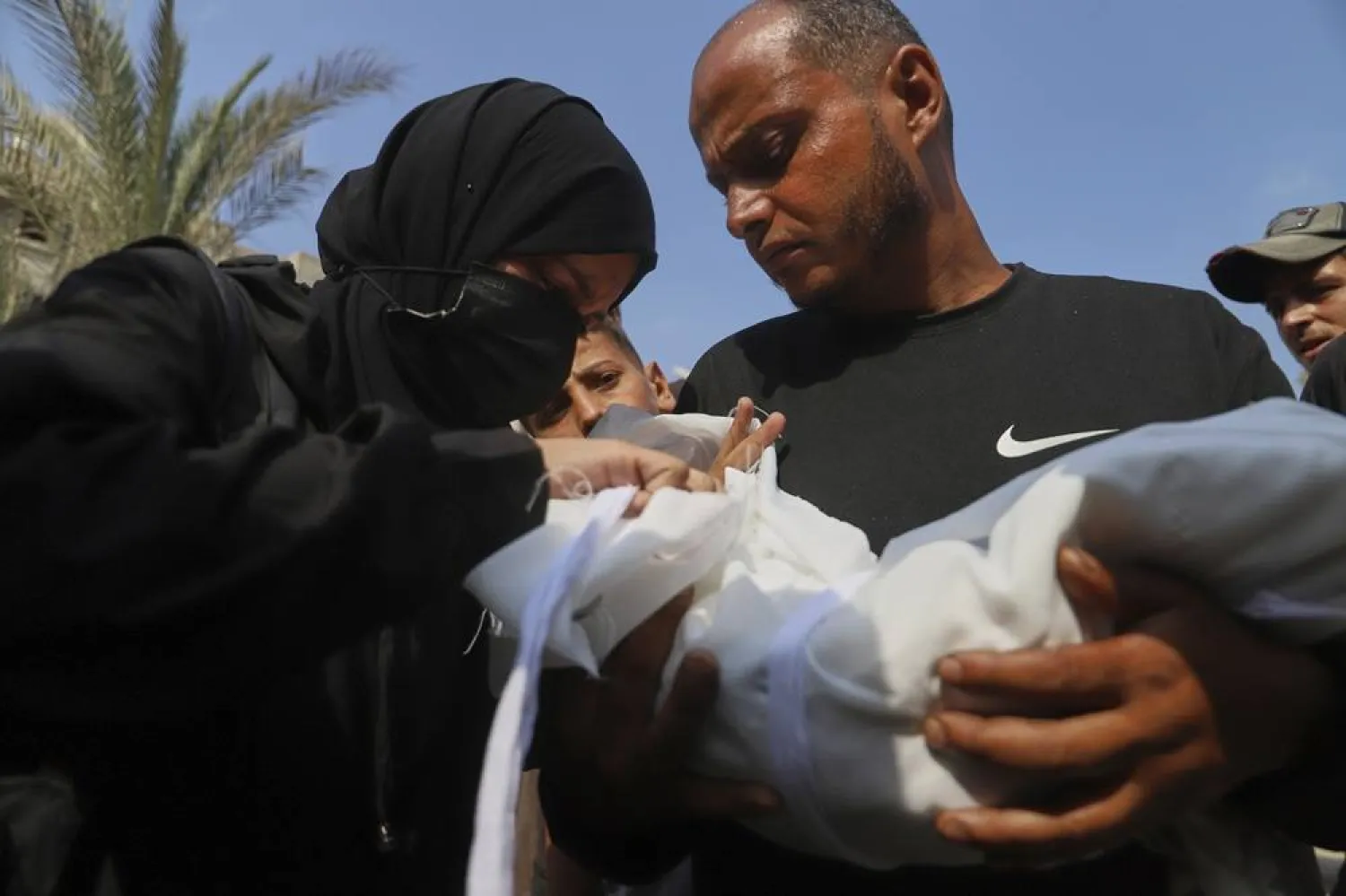A mother pressed a final kiss to what remained of her five-month-old daughter and wept. Esraa Abu Halib's baby now weighed less than when she was born.
On a sunny street in shattered Gaza, the bundle containing Zainab Abu Halib represented the latest death from starvation after 21 months of war and Israeli restrictions on aid.
The baby was brought to the pediatric department of Nasser Hospital on Friday. She was already dead. A worker at the morgue carefully removed her Mickey Mouse-printed shirt, pulling it over her sunken, open eyes. He pulled up the hems of her pants to show her knobby knees. His thumb was wider than her ankle. He could count the bones of her chest.
The girl had weighed over 3 kilograms (6.6 pounds) when she was born, her mother said. When she died, she weighed less than 2 kilograms (4.4 pounds).
A doctor said it was a case of "severe, severe starvation."
She was wrapped in a white sheet for burial and placed on the sandy ground for prayers. The bundle was barely wider than the imam’s stance. He raised his open hands and invoked Allah once more.
Zainab was one of 85 children to die of malnutrition-related causes in Gaza in the past three weeks, according to the latest toll released by the territory’s Health Ministry on Saturday. Another 42 adults died of malnutrition-related causes in the same period, it said.
"She needed a special baby formula which did not exist in Gaza," Zainab's father, Ahmed Abu Halib, told The Associated Press as he prepared for her funeral prayers in the hospital’s courtyard in the southern city of Khan Younis.
Dr. Ahmed al-Farah, head of the pediatric department, said the girl had needed a special type of formula that helps with babies allergic to cow's milk.
He said she hadn't suffered from any diseases, but the lack of the formula led to chronic diarrhea and vomiting. She wasn’t able to swallow as her weakened immune system led to a bacterial infection and sepsis, and quickly lost more weight.
'Many will follow'
The child's family, like many of Gaza's Palestinians, lives in a tent, displaced. Her mother, who also has suffered from malnutrition, said she breastfed the girl for only six weeks before trying to feed her formula.
"With my daughter’s death, many will follow," she said. "Their names are on a list that no one looks at. They are just names and numbers. We are just numbers. Our children, whom we carried for nine months and then gave birth to, have become just numbers." Her loose robe hid her own weight loss.
The arrival of children suffering from malnutrition has surged in recent weeks, al-Farah said. His department, with a capacity of eight beds, has been treating about 60 cases of acute malnutrition. They have placed additional mattresses on the ground.
Another malnutrition clinic, affiliated with the hospital, receives an average of 40 cases weekly, he said.
"Unless the crossings are opened and food and baby formula are allowed in for this vulnerable segment of Palestinian society, we will witness unprecedented numbers of deaths," he warned.
Doctors and aid workers in Gaza blame Israel’s restrictions on the entry of aid and medical supplies. Food security experts warn of famine in the territory of over 2 million people.
‘Shortage of everything’
After ending the latest ceasefire in March, Israel cut off the entry of food, medicine, fuel and other supplies completely to Gaza for 2 ½ months, saying it aimed to pressure Hamas to release hostages.
Under international pressure, Israel slightly eased the blockade in May. Since then, it has allowed in around 4,500 trucks for the UN and other aid groups to distribute, including 2,500 tons of baby food and high-calorie special food for children, Israel's Foreign Ministry said last week. Israel says baby formula has been included, plus formula for special needs.
The average of 69 trucks a day, however, is far below the 500 to 600 trucks a day the UN says are needed for Gaza. The UN says it has been unable to distribute much of the aid because hungry crowds and gangs take most of it from its arriving trucks.
Separately, Israel has backed the US-registered Gaza Humanitarian Foundation, which in May opened four centers distributing boxes of food supplies. More than 1,000 Palestinians have been killed by Israeli forces since May while trying to get food, mostly near those new aid sites, the UN human rights office says.
Much of Gaza's population now relies on aid.
"There was a shortage of everything," the mother of Zainab said as she grieved. "How can a girl like her recover?"







